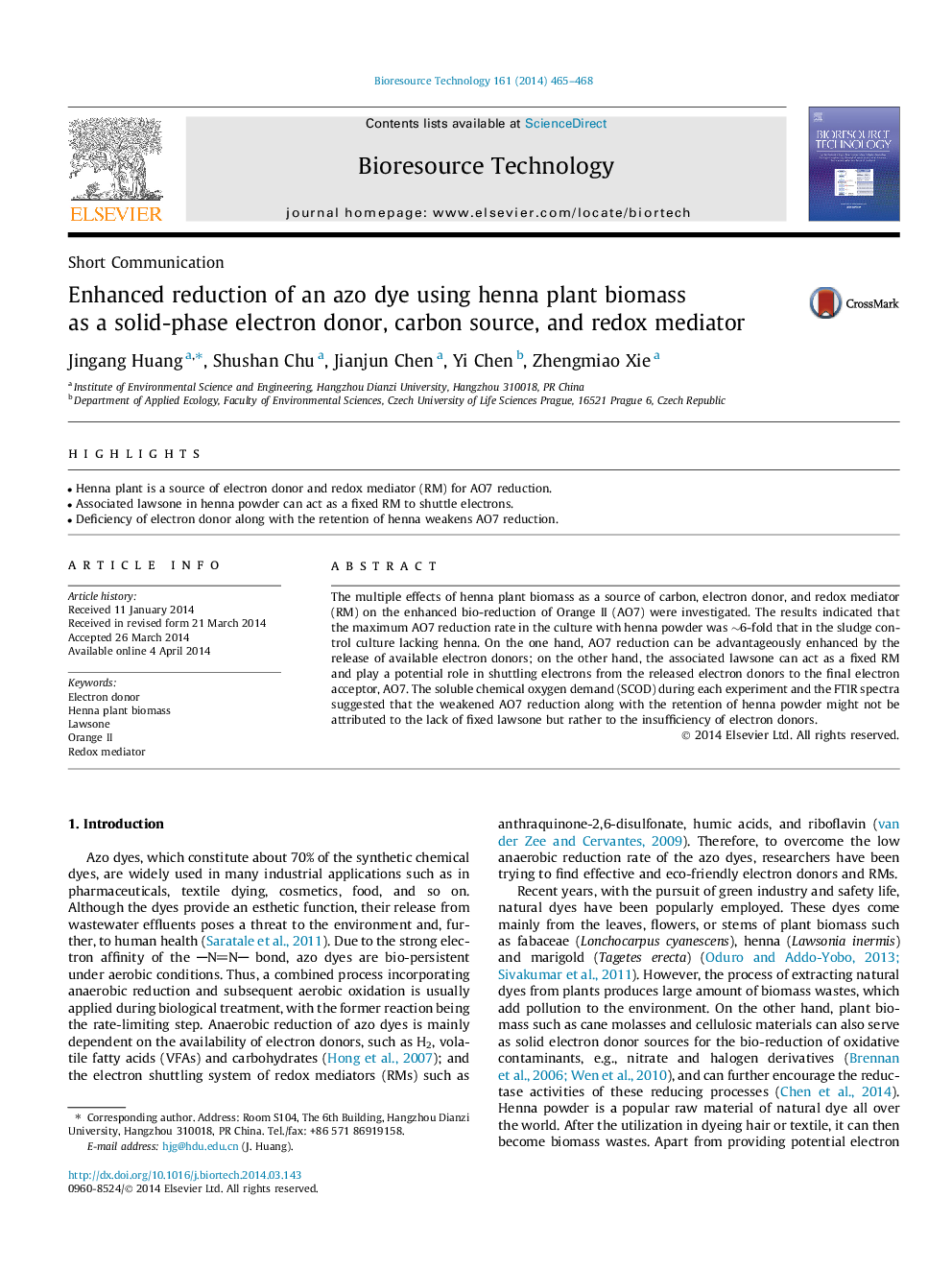| Article ID | Journal | Published Year | Pages | File Type |
|---|---|---|---|---|
| 7078563 | Bioresource Technology | 2014 | 4 Pages |
Abstract
The multiple effects of henna plant biomass as a source of carbon, electron donor, and redox mediator (RM) on the enhanced bio-reduction of Orange II (AO7) were investigated. The results indicated that the maximum AO7 reduction rate in the culture with henna powder was â¼6-fold that in the sludge control culture lacking henna. On the one hand, AO7 reduction can be advantageously enhanced by the release of available electron donors; on the other hand, the associated lawsone can act as a fixed RM and play a potential role in shuttling electrons from the released electron donors to the final electron acceptor, AO7. The soluble chemical oxygen demand (SCOD) during each experiment and the FTIR spectra suggested that the weakened AO7 reduction along with the retention of henna powder might not be attributed to the lack of fixed lawsone but rather to the insufficiency of electron donors.
Related Topics
Physical Sciences and Engineering
Chemical Engineering
Process Chemistry and Technology
Authors
Jingang Huang, Shushan Chu, Jianjun Chen, Yi Chen, Zhengmiao Xie,
